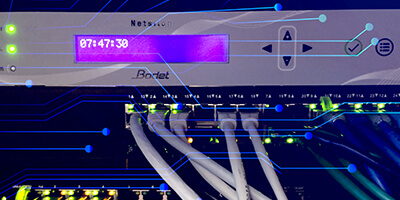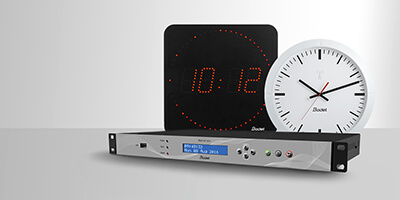Blog
Nowadays, there are many sectors for which each microsecond counts. It is actually the case for the defence, aerospace and the energy sector. As for the application of these sectors, IRIG (Inter-Range Instrumentation Group) is the most widely used time standard. Indeed, it offers reliability and accuracy to complex logistics operations. It also ensures measurement correction in critical telemetry systems.
Video surveillance is an important factor when it comes to security. Whether as visual evidence or a deterrent, video surveillance systems enhance the security of goods and people. What is to be done when the video surveillance system itself is subject to security breaches? Indeed, surveillance cameras are often subject to attacks, from location and image retrieval to manipulation of video data, particularly timestamping. As a result, implementing a reliable time source is essential to secure all video protection systems.
In addition to displaying the time, a railway station or an underground station must distribute a reliable, accurate and secure time to all its equipment.
Indeed, an accurate time allows the railway network to operate correctly: orchestrating departures and arrivals, anticipating delays, informing passengers, and so on. A single time reference must be deployed across all the IT network to synchronise all equipment: clocks, computers, ticket machines, video surveillance systems, radio communications and telephones. In order to meet this need, railway stations and underground stations are being equipped with time servers and specific clocks.
How to remind residents of entertainment times, without going round all the rooms? How to assist them in their loss of space and time? How to discreetly and efficiently inform the nursing staff that an incident is taking place and reinforcements are needed?
How to ensure employees and residents’ safety? How to implement safety measures in my facility?
The MP3 audio format is now widely available and has many advantages. Widely used in the music industry, this format can also be found on all types of audio messages, such as pre-recorded threat-intrusion alert messages, weather event alerts, chemical alerts. But why has the MP3 format become essential? We will tell you why.
As defined in the IEEE-1588 standard, Precision Time Protocol (PTP) is a highly accurate method to synchronise computers over a Local Area Network (LAN). A Network Time Server using PTP is commonly referred to as an ‘IEEE-1588 Grandmaster’ or ’PTP Grandmaster’.
Unlike multi-application devices or typical servers, Network Time Servers are designed to serve one specific purpose: the continuous and precise synchronisation of time across your network.
The following steps are those which are recommended to increase security for a Netsilon Time Server operating behind a firewall on a private network.
Network Time Protocol (NTP) is widely used in LANs (Local Area Network) and WANs (Wide Area Network) to synchronize computer clocks to standard time. NTP sets up a reference server within the network to deliver accurate time to all NTP clients requesting it.
Bodet provides full NTP system solutions including NTP time servers and NTP analogue and digital clock displays.
To most people, GNSS (Global Navigation Satellite System) satellites are something vague that fly around the earth. As long as they function correctly, who cares which ones we use for tasks like positioning and timing?
Not all systems are the same, and when it comes to business use, it's important to understand the differences.









